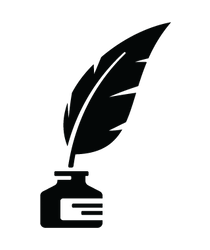Uranium is among the heaviest naturally occurring elements in the periodic table, and as the source material for the atomic bomb and nuclear power its importance in human affairs is clear. Many associate it primarily with meltdowns and mushroom clouds. In Chain Reactions: A hopeful history of uranium, Lucy Jane Santos focuses on the substance’s lighter side.
Before scientists worked out how to manipulate it to produce weapons and then electricity, uranium was enlisted for a variety of more mundane – at times quirky – purposes. In the mid-1800s, it was used chiefly as a colouring agent in glassware and ceramics; as a “secondary application”, Santos writes, it was also sometimes applied to artificial teeth. “By incorporating uranium as a final step in the glass-making process, just before being fired,” she reports, “the teeth were given an orange-yellow hue”. The substance’s medicinal properties were explored, too: “According to a Dr Cook from Buffalo”, she notes, “uranium was great for treating urinary incontinence”.
The book is a compendium of such factoids, offering the reader glimpses of other eras and their sometimes questionable aesthetic and medical choices. The prevailing tone is one of amused delight: with each new nugget of information Santos seems as thrilled as the postwar American uranium hunters – who converged on the Southwest in hopes of becoming “uraniumaires” – when their Geiger counters started clicking.
Even when she does attend to uranium’s more morbid aspects, Santos favours offbeat anecdotes over downbeat assessment. We might assume (for example) that the American public’s first reaction to the bomb, and to atmospheric weapons testing, was one of horror. In fact, the response was mixed, and in some cases positively sanguine. For all the concerns about testing in Nevada in the 1950s, the explosions proved something of a tourist attraction. Visitors flocked to the best vantage points to watch them. “Some hotels even provided packed lunches for their customers to take to picnics at Angel’s Peak, a mountain located 45 miles away.” One hotel served an Atomic Cocktail made of vodka, brandy, champagne, and sherry. “The bomb became another part of the experience of visiting Las Vegas, merging with the town’s glamourous reputation, the thrill of gambling and a pervading sense of otherworldliness.”
This is not to say that Santos ignores the devastating impacts – political, military, civilian and environmental – associated with uranium exploitation. She discusses John Hersey’s powerful book Hiroshima (1946) and cites Einstein’s appraisal of it: “I believe Mr. Hersey has given a true picture of the appalling effect on human beings … And this picture has implications for the future of mankind which must deeply concern all responsible men and women”. She also mentions more obscure tragedies, such as the massive spill from a uranium mill in New Mexico, near the Navajo Nation’s land, in 1979. This accident occurred just four months after the partial meltdown of the Unit 2 reactor at Three Mile Island, and released much more radioactive material than the near-disaster in Pennsylvania but attracted far less publicity.
Santos ends her account in 1979 – “because,” she explains, “[this] was the point at which the narrative of uranium became damaged seemingly beyond the point of repair”. But in recent years, as she points out in a coda, there has been a resurgence of enthusiasm for uranium as an energy source. Advocates of nuclear power see it as an essential tool in the fight against climate change—a position Santos endorses. She briefly discusses new plant construction and the rise of pro-nuclear activism, but suspends judgment on whether a “second hopeful history” is truly under way, leaving that question for a future historian to answer.
Unlike other dense metals – tungsten or osmium, say – uranium has already attracted literary attention, whether directly in Uranium: War, energy, and the rock that shaped the world (2005), Tom Zoellner’s biography of the element, or indirectly through the vast literature on the atomic bomb and nuclear energy. Santos does not contribute any provocative new interpretation or theory, nor does she bring to life any unsung figures. She breezes through both historic and lesser-known events, rather than setting detailed scenes or providing in-depth context.
What she does offer is fluid prose, a sense of humour, and measured analysis. One of her epigraphs is from Marie Curie: “Nothing in life is to be feared, it is only to be understood. Now is the time to understand more, so that we may fear less”. Lucy Jane Santos has clearly tried to take that advice to heart, approaching her subject with curiosity and fair-mindedness. Some readers, contra Curie, may argue that it is wise to fear certain things and will miss a more rigorous engagement with the risks involved in extraction, enrichment and fission. Chain Reactions is far from comprehensive, but for those new to the topic it provides a diverting and idiosyncratic primer.
Source: Times Literary Supplement

